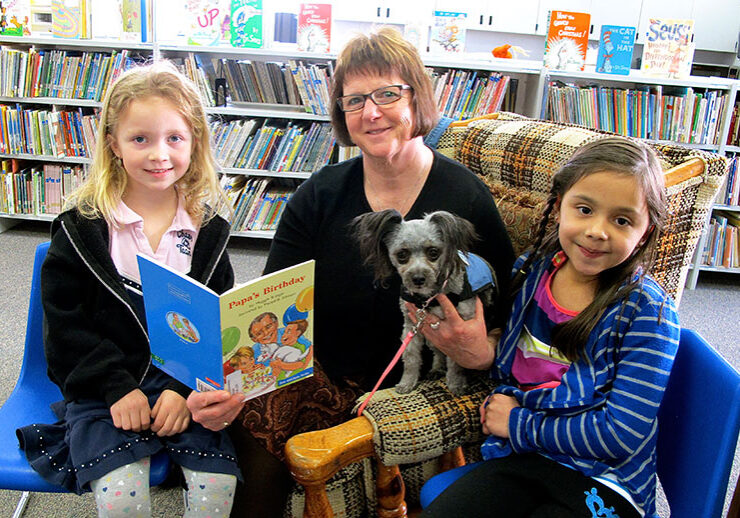 Are you ready for a challenge? Create a mixture of salt and pepper – your task will be to separate them again! How can you do it? Mix the two together, spread the mixture out on a plate and give it a try.
Are you ready for a challenge? Create a mixture of salt and pepper – your task will be to separate them again! How can you do it? Mix the two together, spread the mixture out on a plate and give it a try.
Maybe you can come up with a cool technique for getting the salt and pepper apart, but did you know you can use static electricity to do it easily?
What is static electricity? Ever shuffle across the carpet and then reach out for a doorknob only to get a shock when you do so? Ever wonder why that happens? Let’s explore the science behind static electricity and figure out how to use it to separate the salt and pepper.
Materials:
A plate, salt, ground pepper, a balloon, and a flannel shirt (or something similar) to use to create a static charge.
Procedure:
1. Combine the salt and pepper on the plate. Mix them well so it’s hard to pull them apart.
2. Blow up the balloon and tie it shut.
3. Rub the balloon vigorously (but carefully) on a flannel shirt (any shirt should probably do). You’ll know the balloon is charged when it starts to crackle or makes your hair stand up when you hold near your arm or head.
4. Hover the balloon over the top of the salt and pepper, and watch what happens!
Explanation:
If properly charged, the balloon will attract the tiny ground pepper flakes immediately out of the salt. Those little bits will be plastered onto the side of the balloon.
But why?
When you rub the balloon on the flannel shirt, tiny things (particles) called “electrons” move from the shirt to the balloon. The electrons hold an electrical charge, and that charge attracts certain substances … like the hair on your arm or head, or the bits of pepper. (Salt won’t move for reasons you’ll learn about in chemistry and physics classes.)
Electrons are found in everything around us and play a big role in creating heat and the flow of electricity. When the balloon becomes supercharged with electrons it creates an unbalanced, unnatural condition that causes a flow of electricity as the particles try to rebalance themselves.
Experiment further:
Good scientists think of questions they can ask and ways to change a system. Can you? Can you think of other things that the balloon might attract? Try sticking the balloon to a wall and see what happens. Here’s another trick: Charge up the balloon and then slowly bring it closer to a thin stream of water coming out of your faucet. It will bend the water out of the way!
I hope you enjoyed these simple experiments and learned a little about electrons and static electricity.
Posted in: Education
Comment Policy: All viewpoints are welcome, but comments should remain relevant. Personal attacks, profanity, and aggressive behavior are not allowed. No spam, advertising, or promoting of products/services. Please, only use your real name and limit the amount of links submitted in your comment.
You Might Also Like...

Toddlers Need Exercise Too!
Cardio is not only for adults. With the growing childhood obesity problem, it’s important to get your older baby and toddler up and active. It’s easy to do, as young […]

Counting Rocks with Kids & Creeks
“There is a location at Five-Mile Recreation Area, where, in winter and spring, some of the waters flowing down Big Chico Creek enter into a different channel and become a […]

9 Great Apps To Help High-Schoolers Bound for College
Even though this year looks very different for students planning to attend college next year, some things never change. Typically, colleges and universities want to receive applications this month for […]

How to Foster a Love of Early Literacy in Your Young Child
One of my most treasured photos from my childhood is of me sitting on my father’s lap as he was reading a book on geology. He was not reading to […]



